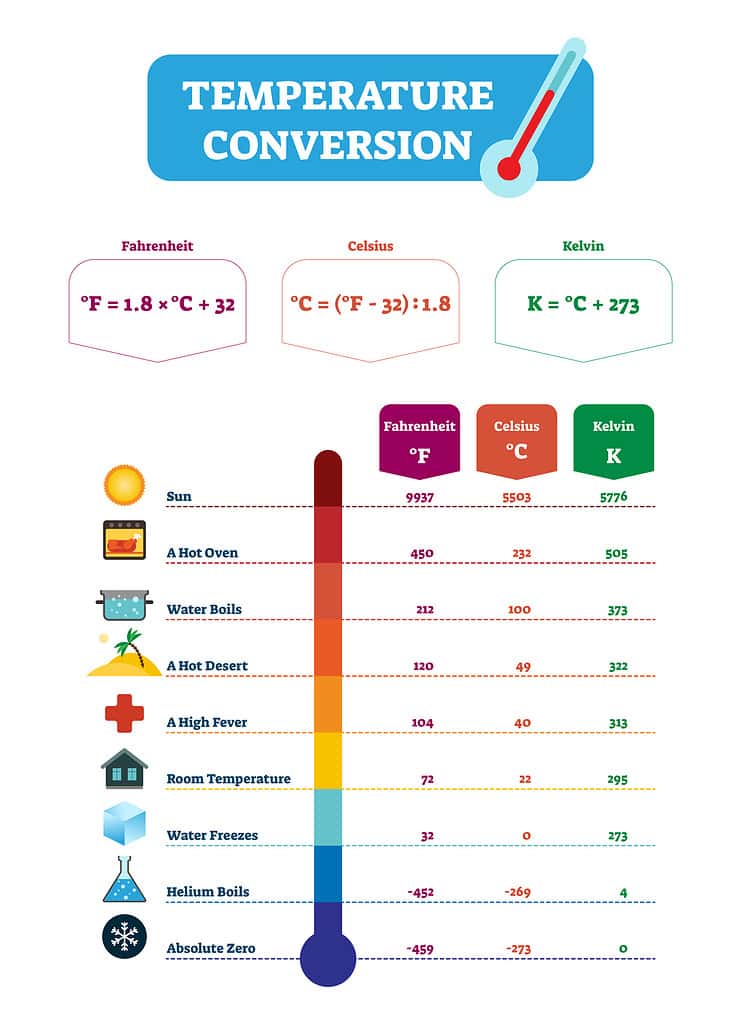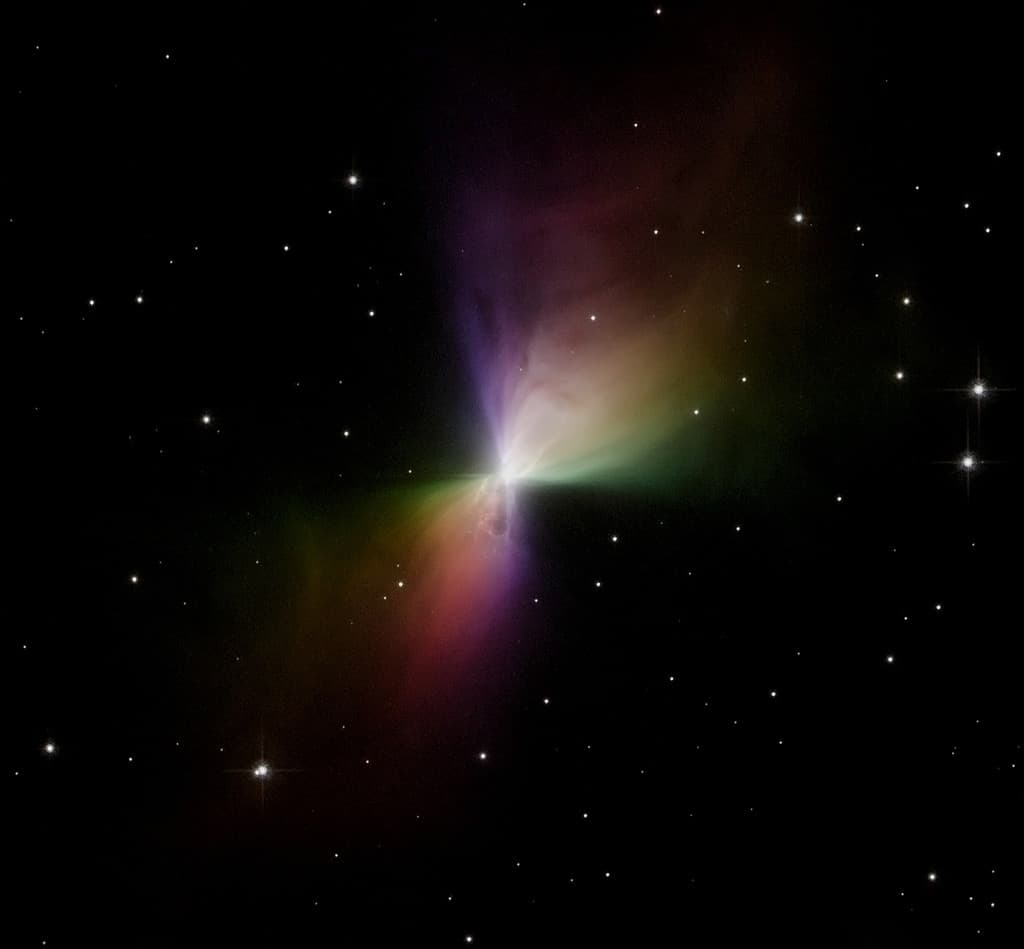The coldest natural place on Earth is Antarctica, where temperatures as low as -128.6 degrees Fahrenheit have been recorded. However, this isn’t even half as cold as things can get in the universe. How cold is absolute zero? Can anything reach absolute zero?
What Is Absolute Zero?

Absolute zero is the coldest temperature in existence.
©VectorMine/iStock via Getty Images
Absolute zero is the coldest temperature in existence. When temperatures reach absolute zero, it leaves a substance with absolutely no more heat energy. At absolute zero, everything within an elemental atom has ceased all movement, which means no heat is being generated.
The colder something is, the less movement is taking place in the molecules of that item. For example, the molecules in ice cream are not moving as much as the molecules in coffee, though both have moving molecules. Absolute zero is the complete absence of any molecular movement.
How Cold Is Absolute Zero?

When molecules reach absolute zero, all motion stops.
©alexnako/Shutterstock.com
Absolute zero is reached at -459.67 degrees Fahrenheit. As matter approaches absolute zero, molecular motion slows. At absolute zero, thermodynamic molecular motion stops altogether.
Entropy is what determines the temperature of matter. The more molecules move, the farther they spread and the wider their radius of temperature dispersion. Heat is created as parts of atoms jam into each other due to the chaos of entropy.
In other words, temperature is directly related to the amount of movement of the molecules in a substance. It is related to the amount of kinetic energy present in the moving parts of the atoms and bonds making up something in three-dimensional reality.
The faster the movement within and between molecules, the warmer something is, and the warmer something is, the farther heat spreads due to the chaos of entropy. This is why a campfire feels hot from a distance while an ice block doesn’t radiate cold in the same way.
Can Anything Reach Absolute Zero?

It would take an infinite amount of work to reach absolute zero.
©Natali _ Mis/Shutterstock.com
Technically, nothing can reach absolute zero, though there are exceedingly rare exceptions in laboratory settings. Absolute zero isn’t attainable because the amount of work it would take to cool something that much is infinite. Putting in enough work to stop all movement in an atom is impossible.
Even if absolute zero could be obtained, quantum mechanics still dictates that some movement would be occurring. This puts another huge hurdle in the mix to overcome when trying to reach true absolute zero.
This means that quantum movement never ceases, even if absolute zero is achieved. Why this is isn’t fully understood by physicists. It is understood, however, that immensely cold particles leave the realm of classical physics and act fully within the realm of quantum mechanics.
How Does Matter Act Near Absolute Zero?

Approaching absolute zero can create superfluids that behave outside of the confines of classical physics.
©Julia Cherkasova/iStock via Getty Images
Matter acts differently than it usually does as its temperature approaches absolute zero. It starts to defy the laws of classical mechanics.
Some gasses in liquid form, like helium, turn into superfluids when they’re near absolute zero. Superfluids are neither viscous nor subject to friction, so they can exit any vessel holding them by moving upward. They also seep through anything with a molecular gap which includes most matter that would make up a vessel.
Bose-Einstein condensates (BEC) are another strange matter state near absolute zero. When atoms get cold enough, they work as a unified unit instead of individual atoms that crash into each other. They are no longer the atomic sum of parts, and they function as a single thing due to the effects of quantum mechanics at such cold temperatures.
These BECs are capable of mind-blowing things. For example, when light is shone through a BEC, it can be trapped within it. They are capable of taking light, which usually blasts around at about 186 thousand miles per hour, and bring it to a standstill.
What Is the Kelvin Scale?

The Kelvin Scale starts at absolute zero.
©SERSOLL/Shutterstock.com
The Kelvin Scale is a way of measuring temperature in a system where zero represents absolute zero. This is useful for scientists because it allows them to conceptualize temperature purely as the amount of thermal energy present in a system. Since absolute zero represents the complete lack of thermal dynamics, its place as 0 on the Kelvin Scale allows all other atomic interactions to be quantified accordingly based on the molecular interaction within that substance.
How Cold Is Space?

The Boomerang Nebula is the coldest known place in outer space.
©NASA, ESA and The Hubble Heritage Team (STScI/AURA) – Original / License
Most of outer space is approximately -454.76 degrees Fahrenheit which is just above absolute zero. However, this temperature goes up a couple of degrees depending on what part of open space is being studied. The reason that space doesn’t sit at absolute zero is there is residual heat from the Big Bang still in existence.
The inside of a black hole is colder than open space. While this part of a black hole doesn’t quite hit absolute zero, it is a single millionth of a degree higher in temperature than absolute zero. That is one of the reasons that the center of a black hole is invisible. In contrast, the bright stuff that scientists can see when studying black holes is moving so quickly that it’s much hotter than 100 million degrees Fahrenheit.
Despite the frigid temperatures of the innards of black holes, there are even colder spots in space. The coldest known place in space is the Boomerang Nebula.
A nebula is a cloud of a substance, and in this instance, it’s gas. This specific nebula acts like a super refrigerator, and it’s about 5 thousand light years away from Earth. It’s so cold that it is one degree Kelvin, which is -457.87 degrees Fahrenheit.
The photo featured at the top of this post is © Leonid Ikan/iStock via Getty Images
Thank you for reading! Have some feedback for us? Contact the AZ Animals editorial team.







